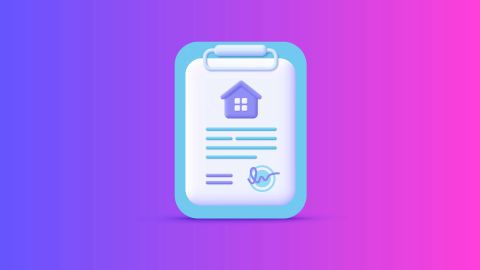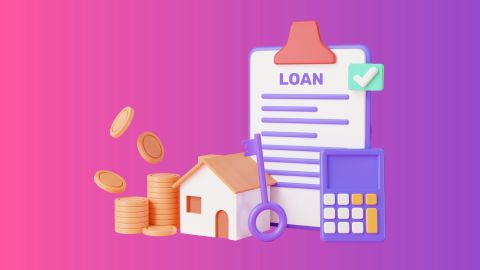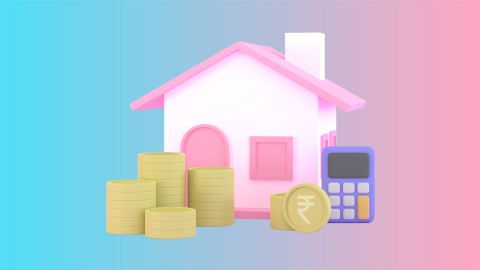Filing Income Tax Returns (ITR) is a crucial aspect of financial responsibility for non-salaried individuals in India. Unlike salaried individuals who have their taxes deducted at source (TDS) by their employers, non-salaried individuals such as freelancers, consultants, business owners, and professionals are required to file their income tax returns independently. This comprehensive guide aims to demystify the process of filing Income Tax Return for non-salaried individuals, covering everything from understanding the types of ITR forms applicable to them to step-by-step instructions for e-filing and compliance with tax regulations.
Step 1: Understand your taxpayer category
Non-salaried individuals include self-employed people, professionals, business owners, partners in a firm, and freelancers or contractors. Each category corresponds with a different ITR form, so it's essential to identify which one applies to you to ensure a successful tax return filing. For instance, self-employed professionals and business owners usually have to fill out ITR-3 or ITR-4.
Step 2: Know your tax slabs
Just as with salaried individuals, non-salaried taxpayers are also categorised according to the income tax slabs. While the tax slab remains constant, the difference for non-salaried individuals lies in the calculation of gross total income, which comprises business income, house property income, and other sources of income.
Step 3: Gather your documents
The documents required for ITR filing by non-salaried individuals include:
- PAN Card
- Aadhaar Card
- Form 26AS (Tax Credit Statement)
- Bank account statements
- Profit and Loss (P&L) account statement and Balance Sheet (in case of businesses)
- Receipts of advance tax payments, if any
Having these financial documents organised not only helps with ITR filing but also strengthens your profile when considering major financial decisions like purchasing a home. Bajaj Finserv offers competitive rates starting from 7.85%* p.a. for self-employed professionals and business owners, recognising their unique income patterns. Check your eligibility for a home loan from Bajaj Finserv today. You may already be eligible, find out by entering your mobile number and OTP.
Step 4: Calculate your Gross Total Income (GTI)
Your GTI comprises various income sources, including income from business or profession, income from house property, capital gains, and income from other sources. While calculating your GTI, remember to deduct the necessary expenses incurred to earn your business or professional income.
Step 5: Calculate your taxable income
Once you have computed your GTI, calculate your taxable income by deducting the deductions available under various sections of the IT Act (like 80C, 80D, 24b, etc.) from your GTI.
Step 6: Compute your tax liability
After calculating your taxable income, apply the income tax rates to this sum to calculate your tax liability. Don't forget to add cess (4%) to the tax computed.
Step 7: File your ITR
The Income Tax Department of India allows e-filing, which is both convenient and time-saving. However, ensure you select the correct ITR form (ITR-3 or ITR-4) for your tax situation.
Step 8: Pay tax due, if any
In case your tax liability is greater than your TDS, you need to pay the additional tax. Conversely, if your TDS is greater than your computed tax, you will be eligible for a refund. The department will either directly deposit the refund to your bank account or send you a cheque.
Paying advance tax
Freelancers, self-employed professionals, and business owners should ideally pay advance tax in four instalments throughout the financial year. Failing to pay can result in penalties.
Chartered Accountants (CAs) can be a valuable resource to ensure accurate ITR filing, especially for non-salaried taxpayers who may have various income streams and expenses.
To ascertain financial stability and fulfil legal obligations, non-salaried individuals, including freelancers and business owners, must understand and follow the process of filing Income Tax Returns (ITRs). Rate slabs, relevant documents, calculations for Gross Total Income (GTI) and taxable income, tax liabilities, and advanced tax are all key considerations in this process. These careful steps ensure you're compliant with tax laws, and better position you for financial planning and securing loans.
In fact, when adequately managed, this understanding of your financial portfolio can open doors towards attractive avenues, such as home loans. Bajaj Finserv offers home loans specifically tailored to fit the varying needs of self-employed professionals, freelancers, business owners, and consultants. Recognising the unique income patterns of non-salaried individuals, Bajaj Finserv offers long repayment tenures, ensuring the loan doesn't strain your finances and aligns well with your income cycles.
Another merit of opting for home loan from Bajaj Finserv Home Loan is that it can positively influence your ITR process. By claiming deductions on the home loan interest repaid under Section 24(b) and principal repaid under Section 80C, you can effectively lower your taxable income, leading to substantial savings.
Check your loan offers from Bajaj Finserv to explore tax-efficient homeownership options. You may already be eligible, find out by entering your mobile number and OTP.
Benefits of filing ITR for a non-salaried person for FY 2024-25 (AY 2025-26)
Filing your Income Tax Return (ITR) might feel like a hassle, especially if you’re self-employed, a freelancer, or running your own business. But doing so can actually benefit you in several ways. If you’ve paid more tax than required, you can claim a refund through ITR filing and save money. Submitting your return on time also lets you carry forward business or professional losses to future years to lower your tax outgo later.
Many banks and financial institutions need ITR documents when processing loans or credit card applications. These returns also act as valid proof of income and residence—especially useful for freelancers, independent professionals, and those applying for visas or high-value insurance policies. Timely filing also helps you avoid heavy penalties, interest charges, or even legal issues. So, even if you're not salaried, filing your ITR is a smart and financially sound decision.
Your filed ITR serves as crucial income proof for significant financial milestones like securing a home loan. Bajaj Finserv caters to non-salaried individuals, offering quick approval within 48 hours* and competitive interest rates starting from 7.85%* p.a. Check your loan offers from Bajaj Finserv and leverage your well-maintained tax records for faster loan processing. You may already be eligible, find out by entering your mobile number and OTP.
Other topics you might find interesting |
|||
Here are a few reasons why you should opt for a Bajaj Housing Finance Home Loan:
- Extended repayment tenures: Benefit from repayment periods of up to 32 years, enabling you to select a plan aligned with your financial circumstances for more manageable repayments.
- Competitive interest rates: Initiate your journey to homeownership with attractive home loan interest rates starting at just 7.45%* p.a, accompanied by EMIs as low as Rs. 681/lakh*, making homeownership more affordable.
- Tailored loan options: Customise your home loan to suit your specific requirements with flexible loan amounts and repayment terms, granting you greater control over the home-buying process.
- Top-up loan facility: Enhance your financial flexibility with a top-up loan, providing additional funds of up to Rs. 1 crore* or higher at competitive interest rates and minimal documentation, simplifying home loan balance transfer management.
Visit the Bajaj Finserv website to learn more and apply for a home loan today. Secure your financial future with the right investments and the right financial support. You may already be eligible, check your home loan offers by entering your mobile number and OTP.




